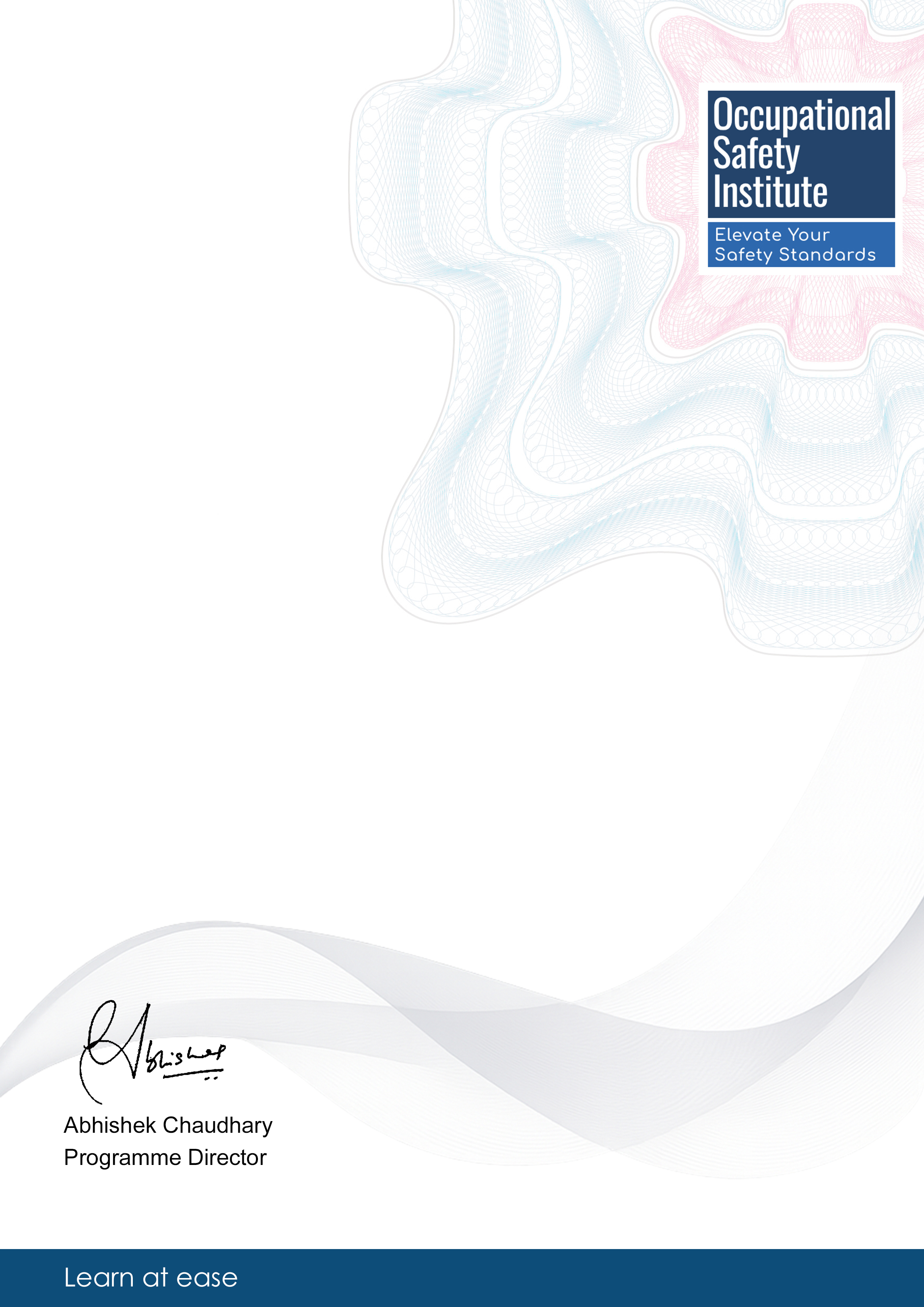Module 1: Introduction to Visual System Adaptations
This module provides an overview of visual system adaptations and their significance in enhancing workplace safety.
This comprehensive course on Visual System Adaptations provides health and safety professionals with practical skills to enhance workplace safety. Designed for professionals looking to improve safety measures, this course offers valuable insights and real-world applications, ensuring participants gain practical knowledge and skills.
4.4/5
|96 reviews
|418 students enrolled
Comprehensive, industry-recognized certification that enhances your professional credentials
Self-paced online learning with 24/7 access to course materials for maximum flexibility
Practical knowledge and skills that can be immediately applied in your workplace
This module provides an overview of visual system adaptations and their significance in enhancing workplace safety.
Participants will learn how to assess visual system risks and develop risk mitigation strategies.
This module focuses on implementing practical solutions to improve visual systems in the workplace.
Participants will learn how to evaluate the effectiveness of visual system adaptations and make continuous improvements.
This programme includes comprehensive study materials designed to support your learning journey and offers maximum flexibility, allowing you to study at your own pace and at a time that suits you best.
You will have access to online podcasts with expert audio commentary.
In addition, you'll benefit from student support via automatic live chat.
Assessments for the programme are conducted online through multiple-choice questions that are carefully designed to evaluate your understanding of the course content.
These assessments are time-bound, encouraging learners to think critically and manage their time effectively while demonstrating their knowledge in a structured and efficient manner.
Professionals with expertise in visual system adaptations are in high demand across industries to ensure workplace safety standards are met. The role offers opportunities for growth and impact.
Career progression in visual system adaptations can lead to roles such as safety consultants, ergonomics specialists, and safety managers. Professionals can further their development through advanced certifications and specialized training.
Safety consultants provide expert advice on safety measures and regulatory compliance.
Ergonomics specialists focus on optimizing work environments for human performance and well-being.
Safety managers oversee safety programs and ensure compliance with regulations.
Professionals in visual system adaptations benefit from networking opportunities with industry experts, pursuing advanced certifications like Certified Safety Professional (CSP), exploring further education paths in ergonomics or industrial hygiene, and gaining industry recognition for their expertise.
Industrial Engineer
"Thanks to this course, I can now implement visual system adaptations effectively to enhance workplace safety in manufacturing settings."
Safety Officer
"Visual ergonomics concepts from this course have helped me identify and address potential hazards related to visual systems in construction sites."
Health Inspector
"I now have the skills to optimize visual communication for improved safety standards in public health facilities, thanks to this course."
Occupational Therapist
"After completing this course, I can evaluate and enhance visual system designs to minimize risks in healthcare environments efficiently."
Upon successful completion of this course, you will receive a certificate similar to the one shown below:

Visual System Adaptations
is awarded to
Student Name
Awarded: January 2026
Blockchain ID: 111111111111-eeeeee-2ddddddd-00000
No specific prior qualifications are required. However, basic literacy and numeracy skills are essential for successful completion of the course.
The course is self-paced and flexible. Most learners complete it within 1 to 2 months by dedicating 4 to 6 hours per week.
This course is not accredited by a recognised awarding body and is not regulated by an official institution. It is designed for personal and professional development and is not intended to replace or serve as an equivalent to a formal degree or diploma.
This fully online programme includes comprehensive study materials and a range of support options to enhance your learning experience: - Online quizzes (multiple choice questions) - Audio podcasts (expert commentary) - Live student support via chat The course offers maximum flexibility, allowing you to study at your own pace, on your own schedule.
Yes, the course is delivered entirely online with 24/7 access to learning materials. You can study at your convenience from any device with an internet connection.
Comprehensive Environmental Management Systems Training for Workplace Safety
This course provides in-depth training on Environmental Man…
Fashion Retail Data Visualization Techniques
Enhance your marketability in the fashion retail industry w…
Agricultural Loan Processing System
This professional course on Agricultural Loan Processing Sy…
Visual Food Styling
This professional course on Visual Food Styling is designed…
Disclaimer: This certificate is not intended to replace or serve as an equivalent to obtaining a formal degree or diploma. This programme is structured for professional enrichment and is offered independently of any formal accreditation framework.